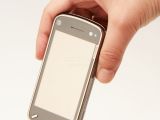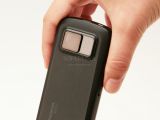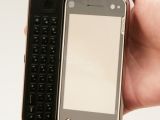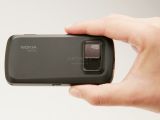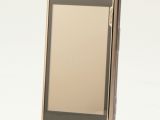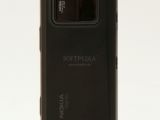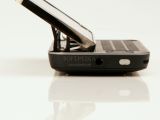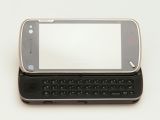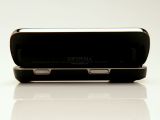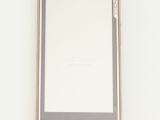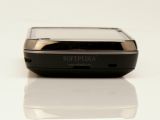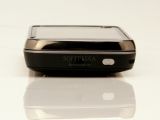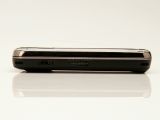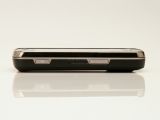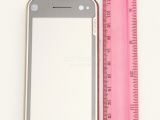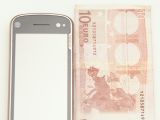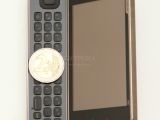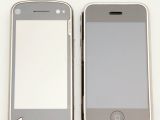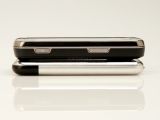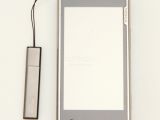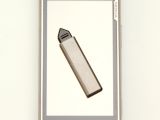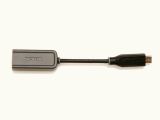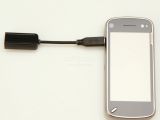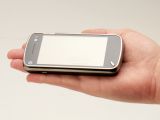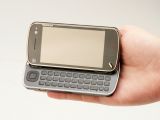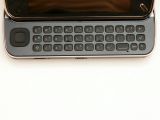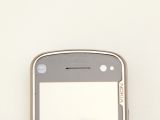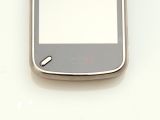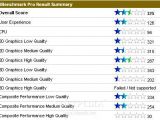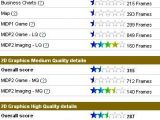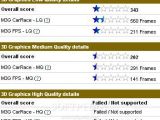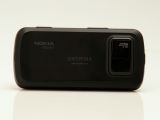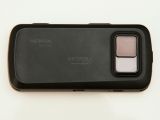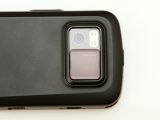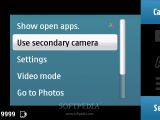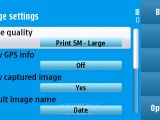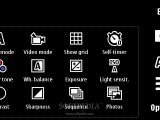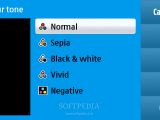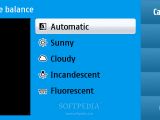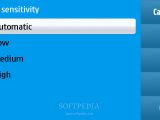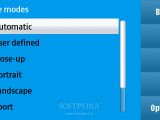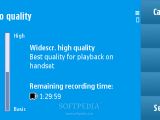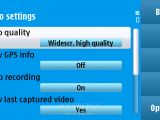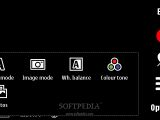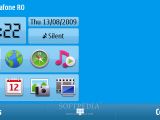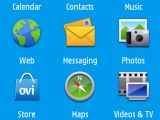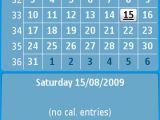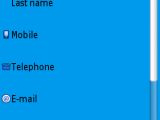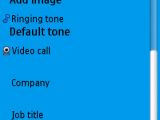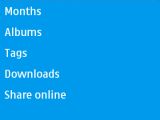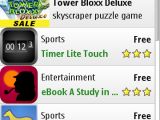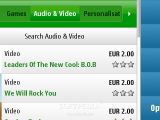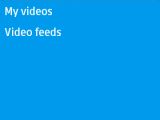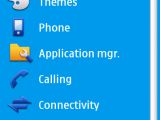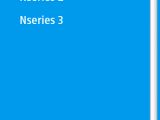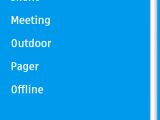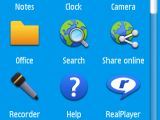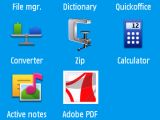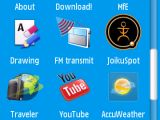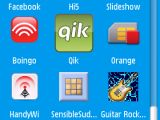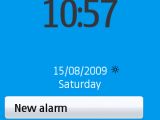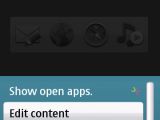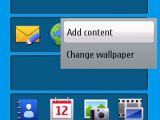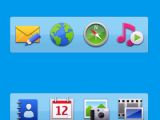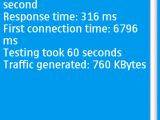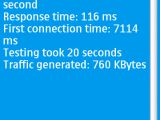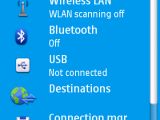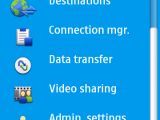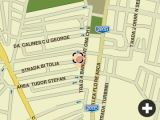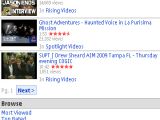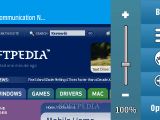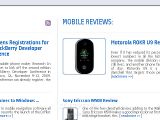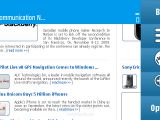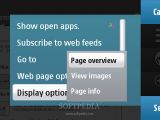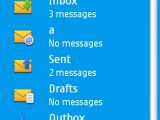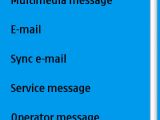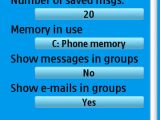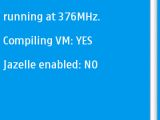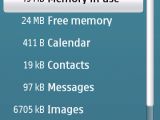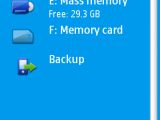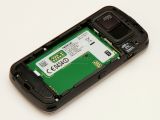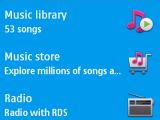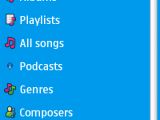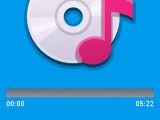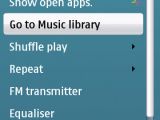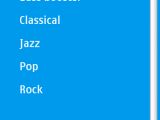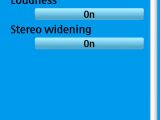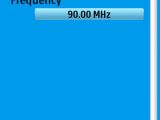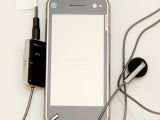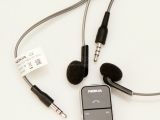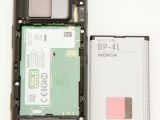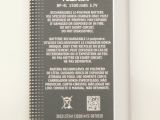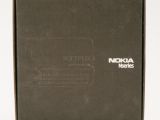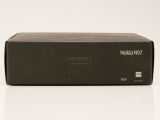The long waiting time is over and we can finally say something about the so much acclaimed N97 smartphone – the iPhone's main rival suggested by Nokia. At first glance, besides the innovative design, the new top of the line touchscreen smartphone manufactured by the Finnish giant has been gifted with almost the same features as the older Nokia 5800 XpressMusic handset. That means it includes the same operating system, processor, HSDPA 3.6Mbps, Wi-Fi, built-in GPS receiver, and the list can go on. Still, the main things that differentiate the two handsets are the full QWERTY keyboard of N97 and the bigger touchscreen. If Nokia 5800 XpressMusic was released as the first Nokia smartphone to feature a touchscreen and an updated Symbian operating system that could go with it, the N97 should have been a piece of art from this point of view.
There were lots of bugs present in 5800's platform and the OS seemed rather rudimentary, but Nokia managed to solve most of them by a wide sequence of firmware updates. Still, the graphical interface, as well as the basic control of the menus remained the same. This shouldn't be that bad, but when you intend to compete with one of the most successful smartphones on the market, the iPhone, you must provide something that has at least equal value. Either Nokia managed to do that with the N97 or not, we will see in the following review, so read and judge for yourselves.
Nokia N97 was announced in November 2008, but managed to hit the shelves only in June 2009, after almost seven months of struggle. The smartphone is available in two classic colors: Black and White. Currently, it can be bought for around 600USD, depending on the location and plan.
Design
The first time I saw Nokia N97 I remembered some of the first HTC's Pocket PCs, launched back in 2006. Of course, the proportions should be kept to a minimum, but still I had a strong feeling of deja vu. First thing that comes to my mind is "heavy" and, yes, I'm talking about weight. Of course, the full QWERTY keyboard takes its toll on the weight of the smarpthone (150g, including battery), but that only strengthens my feeling of deja vu. On the other hand, I was pleasantly surprised to see the new sliding mechanism that N97 features. I'm not sure how resilient that is, as I could only test the phone for two week, but it does feel unusually cool.
As soon as you slide it, the screen turns almost perpendicular on the keyboard, which makes it very easy to read, just like a book. There aren't many external keys around the phone, only the usual stuff that every decent Nokia handset features. Most of the front part is seized by the impressive 3.5-inch touchscreen. Above the display, to the left, there's a secondary videocall camera, which can also be used to take low resolution snapshots. To the right, there's a light ambient sensor and a proximity sensor, detecting when you put your phone to your ear and it shuts off the screen. This one works flawlessly as long as you keep the gadget stuck to your ear. Below the screen, there's a special metallic key, placed diagonally, that opens the main menu of the phone. There are also the usual Accept and Reject call keys, both looking and functioning like touch keys. On the left side of the device, there is a small microUSB port that can also be used to charge the phone, besides the synchronizing function. The right side features a dual-volume key and a dedicated camera key. The power on/off button has been placed on the top side together with the 3.5mm jack port. The 5-megapixel camera on the back of the device is protected by a plastic lid, which can be slid up or down to open the camera interface. The full QWERTY keyboard features 33 keys and is very responsive. There's also a D-pad that can be used to control the menu when you don’t want to touch the screen. The sales package includes a stylus, which looks like a pencil. It can be attached by the phone with a small cord, but I think most people won't use it. The backlighting of the keyboard is equal and strong enough to offer a smooth experience even in dark environments. The microSD slot has been placed under the back hood; fortunately, you won't have to remove the battery to put in the memory card. The sales package also contains a short adapter that comes in handy if you don't have a microUSB charger. The adapter enables you to use the usual Nokia charger instead of the new one that employs the same microUSB port as the PC synchronization cable. I was a little bit disappointed by the cheap-looking plastic used on the front part of the phone. On the other hand, the back of the gadget is made from a slick polished plastic, that feels very nice to the touch and doesn't get covered with fingerprints. Even though it's not the most fortunate choice, I think a phone of that size (117.2 x 55.3 x 15.9 mm) fully made of metal would've weighed a lot. Overall, Nokia N97 strongly resemblance the XpressMusic hit Nokia 5800 in terms of design, but gets a few upgrades in the form of a full QWERTY keyboard, a cool sliding mechanism and a larger screen. It seems that the smartphone is pretty solid, although it's made entirely of plastic. I have my doubts on the sliding mechanism, which is spectacular and very useful, but I'm not really sure how much it will take to break.Display and Camera
Nokia N97 features an impressive 3.5-inch resistive touchscreen, which can also be controlled with the stylus that comes in the sales package. In fact, because of the technology used, the resistive touchscreen must be pressed a little bit harder than those capacitive, thus suffering a little bit from lack of responsiveness. On the other hand, you can control the device using any object you have in mind, which cannot be done on capacitive displays that can mostly be controlled finger-only. Anyway, the colors, brightness and contrast of N97's display are astonishing. The same goes for eligibility under sunlight, which is even better than 5800's.
The size, as well as the fact that it features a stylus, makes it a little bit better than its older sibling when it comes to control. Do not be too happy though, as Nokia N97 is still a long way from the iPhone in terms of user interface and ease of control. Basically, Nokia N97 suffers from not so good thumb control and that is not good for users that hate to carry a stylus all the time. The accelerometer works like a charm and offers maximum satisfaction especially when it is used for gaming. Check out the benchmarks below to see how the display fared.
The 5-megapixel camera of N97 features Carl Zeiss optics, autofocus, dual LED flash, video-light, geotagging and a pretty extensive interface. Unfortunately, the camera lacks new advanced functions such as smile detection, face recognition or blink prevention. If you are familiar with 5800's camera interface, then you will see that N97 features almost the same camera interface. The camera can take pictures with a maximum resolution of 2592x1944 pixels and saves the images pretty fast. All the settings and functions can be displayed on the touchscreen: Contrast, White Balance, ISO, Sharpness, Exposure compensation, Color tones and many more. There's also a touch-n-shoot button on the screen, which enables users to take pictures with a simple touch instead of using the dedicated camera button. Sadly, this the touch button lacks the "half way press" function, so you won't be able to take advantage of the autofocus feature. The phone also has a secondary videocall camera that can be used to take pictures. The main camera can shoot clips in VGA mode at 30FPS, while the secondary can record videos in VGA mode at 15fps. Overall, the pictures taken with N97's camera are excellent, but still there's the problem of megapixels, which lately seem to count when it comes to mobile phone cameras. While companies such as LG and Samsung are trying to boast their camera phone with a high number of megapixels, but also new settings and features that could greatly improve the quality of the pictures, Nokia hasn't improved its cameras lately. Hopefully, the next 8-megapixel camera phone coming from Nokia will change that and will show that Nokia is interested in this aspect as well.Menu and Software
Nokia N97 runs Symbian 9.4 operating system, with S60 5th Edition interface. Basically, it's the same OS launched with the 5800 XpressMusic smartphone. Much improvement has been done to the latter through numerous firmware updates; still, the user interface doesn't rise up to the standards. Especially now, that the iPhone has become the standard. Unfortunately, compared with iPhone's interface, the new Symbian touch interface is a joke. What's tragic is that even future improvements won't get it closer to what it should be.
I think the best way to deal with this is to totally reshape the whole graphical interface and rethink the entire operating system, or simply adopt a new one. I never thought I would say this, but as I see it now, Symbian is an obsolete OS. As a result, the layout of N97's menus hasn't changed too much, except maybe for the fact that you can now organize your applications the way you want to, but that was common to 5800 XpressMusic too. To bring up the Main menu key, click the metallic key under the screen, choose Options/Organise, and put your more often used applications on top, so they'll have their icon more exposed to your finger. The Home screen features the same customizable Shortcut bars that contain icons of the applications that users have previously set. They are now functioning like widgets too and offer a little bit of entertainment to the common user. Also, you can now access the connectivity area of the smartphone, directly from the Home screen. That is only possible if you have a data transfer connection active and displayed on the top right of the touchscreen. You can then click the Bluetooth icon and go directly to the connectivity settings of the device. Not only has the menu been kept the same as 5800's, but also the low level of organization. You will find applications that come pre-installed with the phone together with the clock, notes, office, recorder and other Symbian-specific functions. Even though many software developers took the chance and started to make applications compatible with the new Symbian version, there are still some inconveniences, as not all apps are fully compatible. The device has a variety of input methods: stylus, plectrum and finger touch support for text input and UI control, but the best by far is the full QWERTY keyboard. To sum it up, here’s what we get in Nokia N97: complex calendar, Notepad, calculator, converter, file manager, recorder, IM. There's no media sub-menu, but you get some dedicated apps under the Music menu: music player, Stereo FM RDS Radio, Gallery, RealPlayer, Podcasting, Music store. There's also a YouTube client, PDF reader (trial version) and QuickOffice applications, which can only be used to display documents, but you cannot edit any unless you pay for an upgrade.Communication
Nokia N97 is a quad-band GSM (850 / 900 / 1800 / 1900) handset, HSDPA 900 / 1900 / 2100 (3.6 Mbps) compatible, which features GPRS class 32 (100 kbps), EDGE 32 class (296 kbps), High-Speed Circuit-Switched Data (57.6 kbps) and Wi-Fi 802.11 b/g (UPnP technology).
Unfortunately, you don't have a WLAN shortcut on the Home screen anymore to quick access Wi-Fi. If you want to connect to the Internet, you must first define an Access point (EDGE, WLAN or 3G). You can do that by going to Main menu - Tools - Settings - Connection - Access points and define which access point is to be used whenever a network connection is required (Main menu - Home network – Settings). The integrated browser is the same that you can get in the old 5800 XpressMusic phone. It has full Java and Flash support, but fails at the ergonomics control. First, it's way slower than the iPhone's browser, but also harder to zoom in/out, swipe from left to right or simply fit the webpage to width or to height. The handset features a GPS receiver, which works in conjunction with Nokia Maps. I have tested the localization times and noticed that Nokia N97 GPS is pretty fast. The built-in GPS receiver features the A-GPS function, which makes localization even faster. It quickly pin-points you even when the phone is indoors. Also, it comes with three months of free voice guided navigation via Ovi Maps.Other connectivity tools include Bluetooth 2.0 with A2DP and EDR support, and microUSB for PC synchronization (no charging). The Bluetooth connection reached almost 135 KB/s when sending files and 150 KB/s when receiving, which is way above the average.
In terms of messaging, the phone offers a complete solution, accepting all available message types. Furthermore, given the fact that it features a QWERTY keyboard, you'll be able to type your messages faster. The message client works with POP3, SMTP, and IMAP4 protocols, and supports more than one email account. Also, it can download headers or full email, and supports attachments.
The quad-band (GSM 850 / GSM 900 / GSM 1800 / GSM 1900) network compatible handset has a very good GSM signal reception. The sound is very good at both ends, and pretty loud too. The vibration alert is also above average in intensity, so you don't really need to set it to higher levels.Processor and Memory
Nokia N97 is powered by an ARM11 family processor running at speeds of up to 434 Mhz. This may be the biggest disappointments of the smartphone, as everyone was expecting for a 600 Mhz CPU, which was even rumored for a while. Even though I haven't experienced too many lags and freezes, I still believe that the iPhone is much faster thanks to its CPU.
Anyway, the place where N97 shines is storage space, as it comes with 32GB internal memory, which can still be extended with 16GB more, thanks to the microSD slot placed under the battery cover. The smartphone also features 128 RAM, which are more than enough to run any possible application without getting the "memory full" message.Multimedia
I have found that the multimedia department is another strong point of the gadget. The smartphone features the same standard looking music player as Nokia 5800 XpressMusic, with little to no cosmetic changes. In fact, it's almost boring, but the actual sound that you get makes you forget about that. Nokia N97 music player is simply exceptional at all aspects.
You have five pre-installed equalizer modes: Bass booster, Classical, Jazz, Pop and Rock. Other settings are: Balance, Loudness and Stereo widening. Besides the Radio FM with RDS function, the smartphone also includes an FM transmitter, which enables users to stream their own music. Reception is very good, and sound is above average. The Bluetooth 2.0 with A2DP support enables you to listen to music wirelessly. The 3.5mm jack port is a good addition, as it enables you to change the headphones that are coming with the phone (HS-45). There's also an adapter that features music controls (AD-54).Battery
The 1500 mAh Li-Ion (BP-4L) battery has an officially stated life expectancy of 432 hours in standby (408 for 3G) and of about 9 hours and 30 minutes in talk time mode (6 hours for 3G). I have noticed that the phone has a very good playback autonomy (40 hours official), whereas the talk time tends to reach about 2-3 hours at the most, regardless of the network used. This is one of the serious downsides of the phone, the low battery autonomy, which drains too fast.
Impressions
I wanted to like Nokia N97, I have tried to find something new and innovative that could make me buy one, but I simply couldn't find a strong reason to do it. There are other communication solutions that offer more than Nokia N97 and for a much reasonable price. My impression is that the Finnish giant launched another "unfinished" product, which became obsolete right at launch. Technology advances fast and it appears that Nokia simply cannot keep the pace with its rivals.
The Good
Well, there are some good things even in a bad phone, so Nokia N97 still has its good parts. These are the impressive display, the full QWERTY keyboard, HSDPA and Wi-Fi technologies, plus the built-in GPS receiver (with three months of free voice guidance). Also, the 5-megapixel camera is superior to most cameras of the same kind. The music player and the 3.5mm jack port are exceptional as well.
The Bad
The battery is so low that it will drain way too fast if you use the phone to talk too much. Such a big display would've made a nice addition if you had had a good browser or an eye-candy UI. Symbian OS 9.4 with S60 5th Edition UI cannot be compared to the iPhone's UI or Android. The ack of some free business tools like document readers is another letdown.
Sales Package
Nokia N97 handset Nokia 1500 mAh Battery (BP-4L) Nokia Travel Charger (AC-10) Nokia Connectivity Cable (CA-101) Nokia Wired Headset (AD-54, HS-45) Nokia Charger adapter (CA-146) Cleaning cloth Stylus.
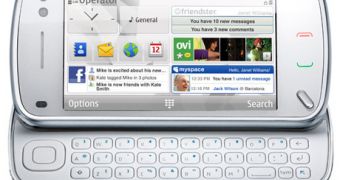
 14 DAY TRIAL //
14 DAY TRIAL // 
